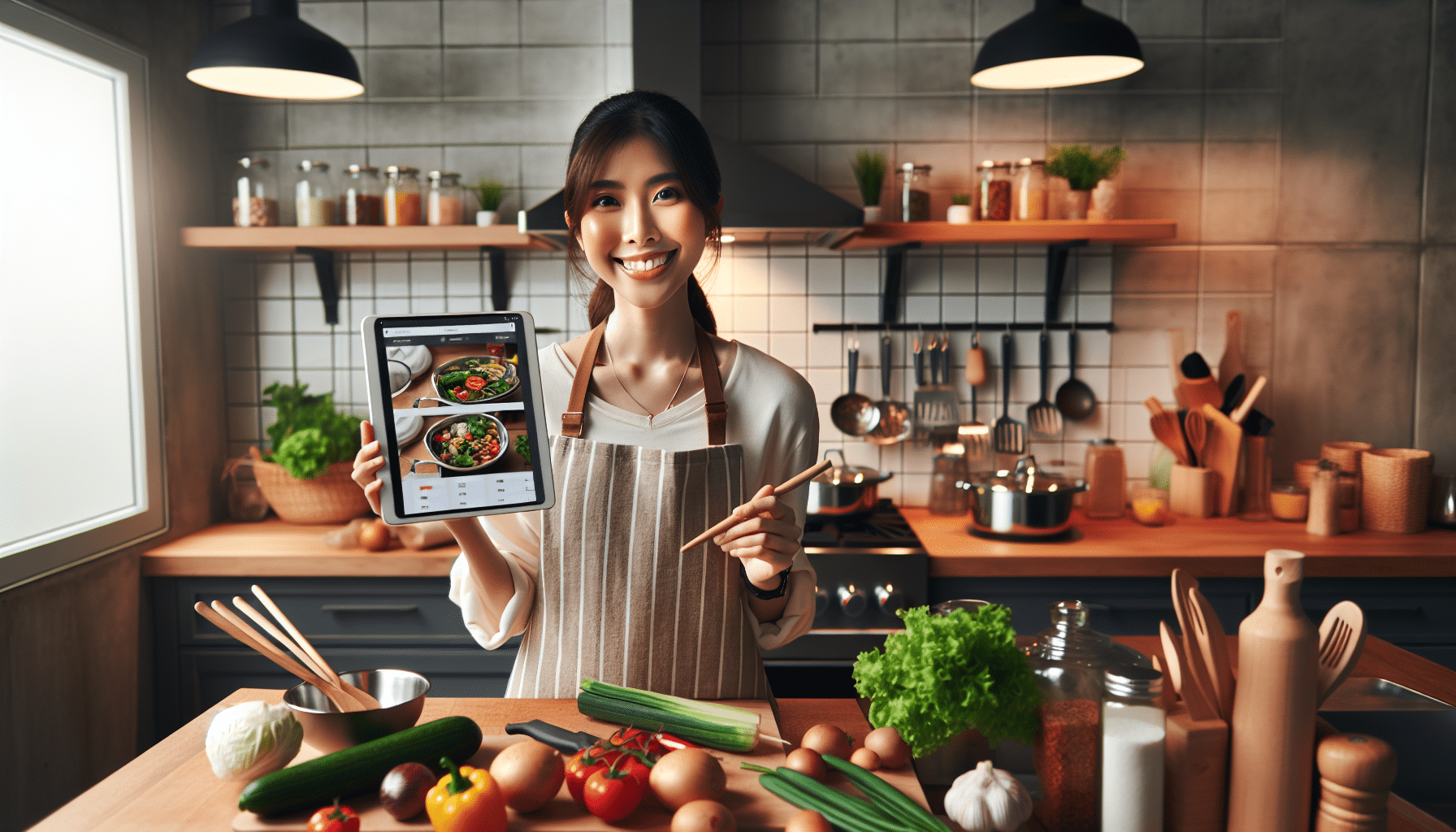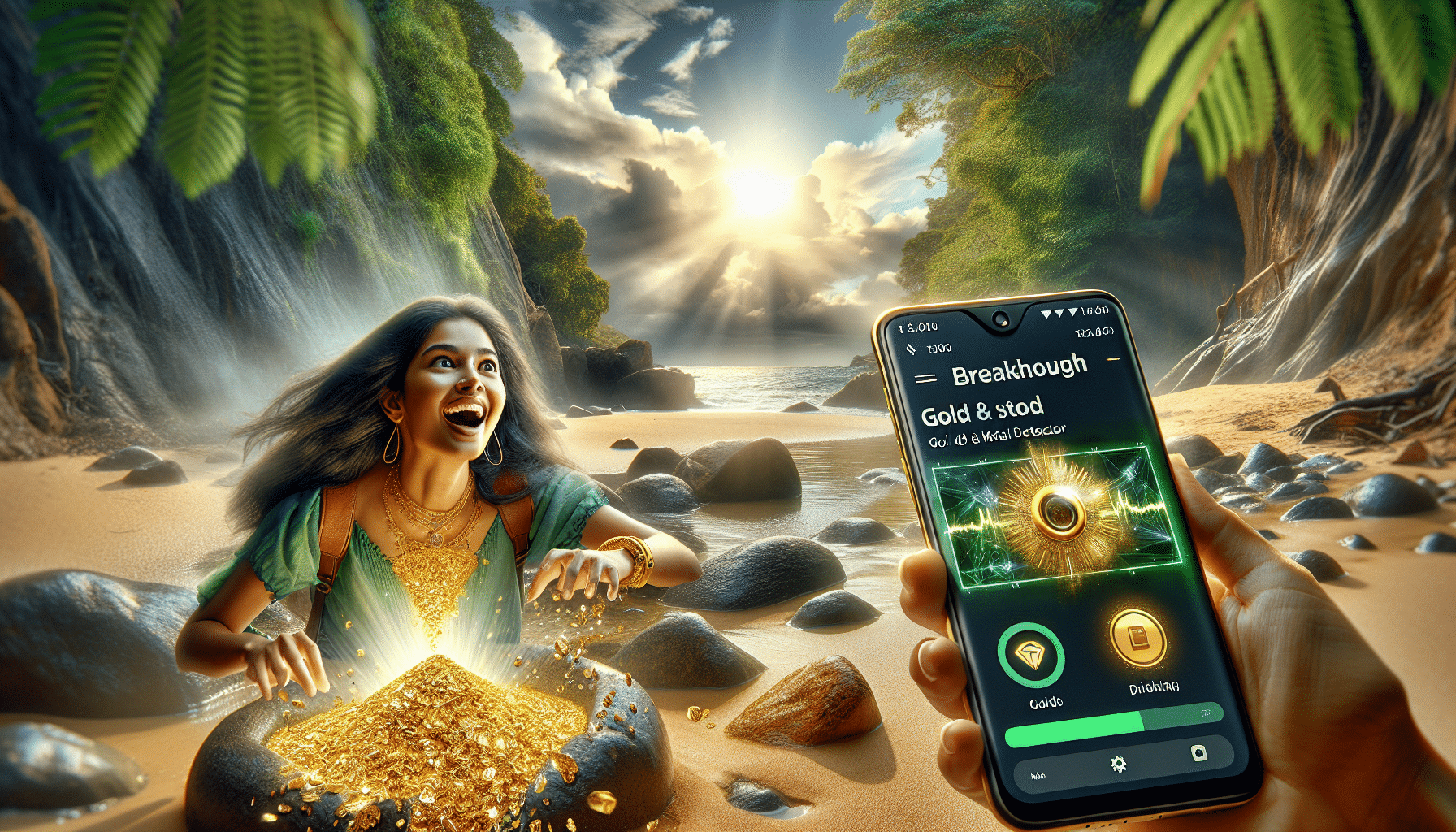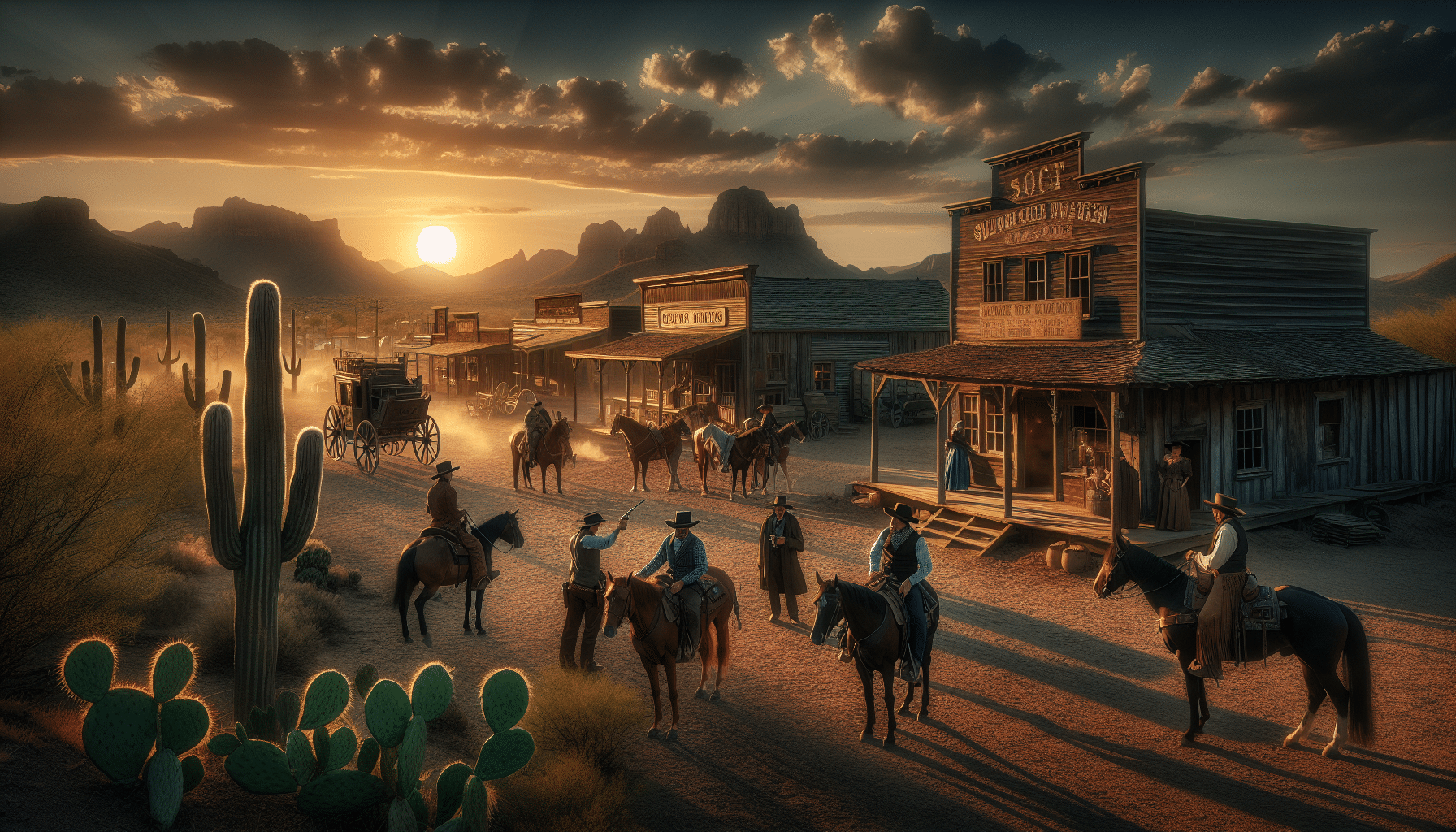Advertisements
Can you imagine capturing stunning photos with just a tap? Today, the quality of the images we take with our mobile devices can compete with professional cameras, as long as we have the right tools.
In this space, we'll show you the best camera apps available on the market that will transform your photos from simple snapshots into works of art.
Advertisements
In the digital world, first impressions are crucial. Whether you're creating content for social media, a professional portfolio, or simply want to capture special moments in the best possible quality, choosing the right camera app can make all the difference. There are several options on the market, each with unique features that can suit your needs and elevate the quality of your images to amazing levels.
From apps that offer advanced manual controls to those that employ artificial intelligence to automatically enhance your photos, the variety is immense. Here, we'll explore each of these options in detail, providing you with a comprehensive guide so you can choose the one that best suits your photography preferences and goals. We'll also give you tips and tricks to get the most out of each app, ensuring spectacular results effortlessly.
Advertisements
Dive into the exciting world of mobile photography and discover how camera apps can revolutionize your photography experience. Whether you're a beginner or an expert, this guide will give you the tools you need to capture stunning images in any situation.
Exploring the main features of camera apps
The camera apps available on the market are packed with features that can transform your ordinary photos into true works of art. From manual control of settings like ISO, exposure, and focus to applying filters and effects in real time, these tools are essential for any photography enthusiast.
One of the most interesting aspects of these apps is the ability to adjust manual settings. This means you're no longer limited to the automatic settings of your smartphone camera. For example, by adjusting the ISO, you can control the camera's sensitivity to light, which is particularly useful in low-light environments. Exposure allows you to control the amount of light entering the camera, avoiding photos that are too bright or too dark. Manual focus, on the other hand, ensures that the main subject of the photo is always sharp.
Additionally, many apps offer the option to apply filters and effects in real time. This is ideal for those who want to immediately see how the photo will look after editing, without needing additional software. And let's not forget scene modes, which automatically adjust camera settings based on the type of photo you're taking, whether it's a portrait, landscape, or night shot.
In short, the features of these apps are designed to give photographers, whether beginner or professional, more control and creativity.
The 5 best camera apps you should know
There are countless camera apps available, but a few stand out for their advanced features and easy-to-use interfaces. Let's explore the top 5 camera apps that are revolutionizing mobile photography:
- Camera+ 2
Camera+ 2 is one of the most popular and comprehensive camera apps on the market. It gives you access to full manual controls, including ISO, exposure, and focus. Additionally, the app offers a variety of filters and effects that can be applied in real time, allowing you to see the final result even before taking the photo.
Other features include image stabilization, which helps prevent blurry photos, and macro mode, ideal for capturing minute details. The Camera+ 2 interface is intuitive and easy to use, making it a great choice for both beginners and experienced photographers.
- ProCam 8
ProCam 8 is another camera app that offers a wide range of features. It allows full manual control, including ISO, exposure, and white balance settings. ProCam 8 also offers shooting modes such as burst, time-lapse, and slow motion.
What really sets ProCam 8 apart is its ability to record high-resolution videos, including 4K. This makes the app an excellent choice for anyone looking to capture high-quality photos and videos. Additionally, ProCam 8 offers a variety of editing options, allowing you to enhance your photos directly within the app.
- Halide
Halide is known for its minimalist, easy-to-use interface, but make no mistake: it's one of the most powerful camera apps out there. With Halide, you have access to full manual controls and a real-time histogram, which helps ensure your photos are properly exposed.
One of Halide's most impressive features is its advanced portrait mode, which uses artificial intelligence to create realistic background blur. Halide also supports RAW files, allowing for more precise, high-quality edits.
- Adobe Lightroom
While Adobe Lightroom is best known as a photo editing software, its built-in camera app is equally powerful. With Lightroom, you can capture photos in RAW format and have access to full manual controls.
Lightroom's true strength lies in its editing capabilities. The app offers a wide range of editing tools, from basic brightness and contrast adjustments to advanced color correction. If you're looking for a camera app that offers high-quality capture and editing, Lightroom is an excellent choice. The advanced features of camera apps make capturing high-quality photos easy.
- VSCO
VSCO It's popular among young photographers and influencers for its simple interface and stylish filters. While it may seem basic at first glance, VSCO offers manual controls and support for RAW capture.
VSCO's filters are a highlight, allowing you to add an artistic touch to your photos with just a click. Plus, the app offers a sharing platform where you can discover and be inspired by the work of other photographers.
Full manual controls (ISO, exposure, focus)
Real-time filters and effects
Automatic scene modes
Image stabilization
High-resolution video recording (4K)
Turn ordinary photographs into works of art
One of the biggest advantages of using advanced camera apps is the ability to transform ordinary photos into true works of art. This is possible thanks to the combination of advanced capture and editing features these apps offer.
For example, by using the HDR (high dynamic range) feature, you can capture a wider range of details in the light and dark areas of your photo. This is especially useful in high-contrast situations, such as landscapes at sunset or urban scenes with strong artificial lighting.
Another powerful feature is the ability to capture in RAW format. Unlike JPEG, RAW preserves much more image information, allowing for more precise adjustments during editing. Applications like Halide and Adobe Lightroom support RAW capture and editing, providing superior image quality.
Filters and effects also play a crucial role in transforming photos. They can add an artistic touch or correct imperfections like poor white balance or improper lighting. Apps like VSCO and Camera+ 2 offer a wide range of filters that can be applied with a simple click, making the editing process easier.
Finally, image stabilization is another feature that can improve the quality of your photos. This feature is especially useful in low-light situations or when you need to capture moving images. Stabilization helps reduce blur, resulting in sharper, clearer photos.
In short, the advanced features of these camera apps offer countless possibilities to transform your photos and improve their quality with just a click.
Tips to maximize the use of camera apps
To get the most out of your camera apps, it's important to follow a few tips that can significantly improve the quality of your photos. Here are some recommendations:
- Explore manual configuration
Don't be afraid to explore your camera app's manual settings. Adjusting ISO, exposure, and focus can make a big difference in the quality of your photos. Experiment with different settings to see which ones work best in different situations and lighting scenarios.
- Use filters sparingly
While filters can add an artistic touch to your photos, it's important to use them sparingly. Overly heavy filters can make your images look artificial and exaggerated. Opt for subtle filters that highlight the natural elements of the photo.
- Take advantage of the RAW format
If your camera app supports RAW capture, take advantage of that feature. RAW photos retain more information and offer greater flexibility during editing. However, keep in mind that RAW files take up more storage space.
- Stabilize the camera
Image stabilization is essential to avoid blurry photos, especially in low-light conditions. Use a tripod or rest your phone on a stable surface to ensure sharp, clear photos.
- Edit with precision
Once you've captured your photos, use the app's editing tools to enhance them. Adjusting brightness, contrast, and saturation can make a big difference in the quality of the final image. Avoid excessive editing, which could compromise the natural look of the photograph.
By following these tips you can make the most of the features.
The future of camera apps
The future of camera apps promises to bring even more innovations and features that will take photo quality to the next level. As technology advances, we can expect significant improvements in areas like artificial intelligence, augmented reality, and image processing.
One of the most promising trends is the use of artificial intelligence to optimize image capture. Camera apps are beginning to incorporate machine learning algorithms that can recognize scenes and automatically adjust settings to get the best possible photo. This is especially useful for beginner photographers who are still learning to master manual settings.
Augmented reality is also gaining ground in camera apps. Features like real-time filters and interactive effects are becoming increasingly common. This not only makes the shooting process more fun but also offers new creative possibilities for photographers.
Another area that is expected to evolve significantly is image processing. With improved smartphone processors and the introduction of new technologies like advanced HDR, photos captured with camera apps will be even sharper, more detailed, and more realistic.
Overall, the future of camera apps is extremely bright and should continue to offer powerful tools so photographers of all skill levels can easily capture incredible images.
Conclusion
In conclusion, making the most of the best camera apps available on the market can significantly transform the quality of your photos with just a click. These apps are designed not only to facilitate the capture of high-quality images but also to provide a wide range of creative tools that allow photographers, both beginners and professionals, to take their skills to the next level.
From manual ISO, exposure, and focus adjustments to applying real-time filters and effects, these apps offer detailed control over every aspect of photography. The ability to capture images in RAW format and additional image stabilization ensure every photo is as sharp and clear as possible, even in low-light conditions.
Furthermore, with constant technological evolution, the future of camera apps looks even brighter. The incorporation of artificial intelligence and augmented reality promises to make photo capture more intuitive and creative. Features like automatic scene recognition and real-time interactive effects are taking mobile photography to new levels of sophistication.
To maximize the use of these powerful tools, it's essential to explore and experiment with the various settings and features they offer. Use filters sparingly, take advantage of the RAW format for greater editing flexibility, and be sure to stabilize your camera to avoid blurry photos.
Ultimately, with the right camera apps, you can transform ordinary photos into true works of art, capturing moments with a quality and creativity previously only possible with professional equipment. So, what are you waiting for? Download one of these amazing apps and start exploring their full potential today!








